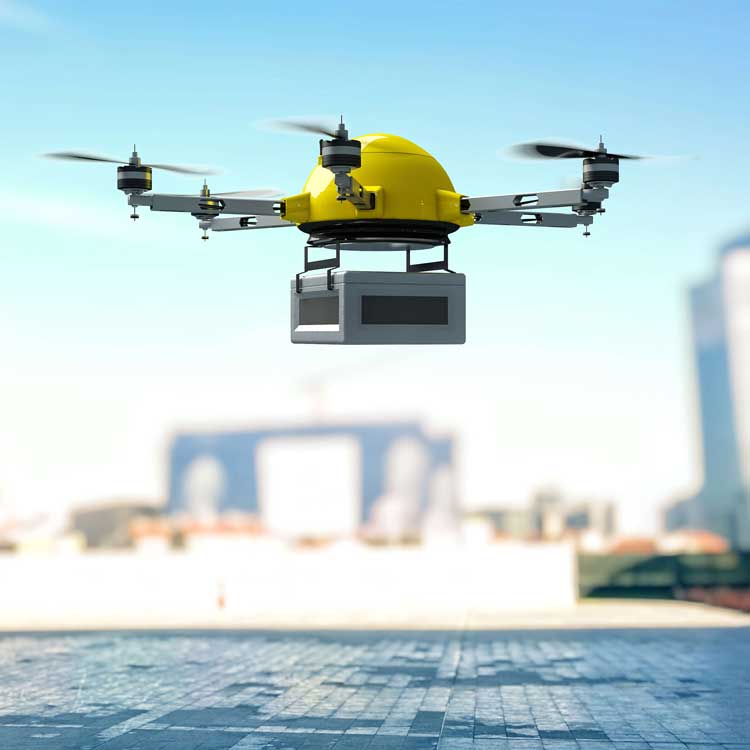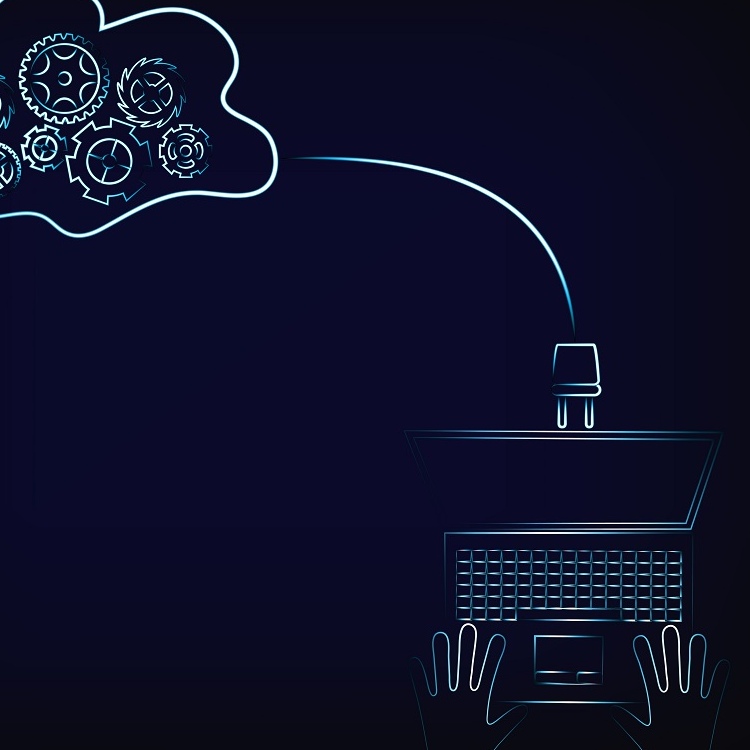Imagine a package has just arrived, but there is neither a delivery person at the door nor a UPS truck in the cul-de-sac. Instead, there’s a faint, buzzing hum of an autonomous flying robot that has dropped a package in the backyard.
Or perhaps someone is running late for a meeting on a Friday afternoon. Instead of braving rush-hour traffic, they open an app on their smartphone and order a self-flying taxi that picks them up and delivers them on time.
Thanks to a new generation of unmanned aerial vehicles (UAVs) that can carry parcels and people without the constraints of roads and sidewalks, what sounds like fantasy is actually the very real – and very near – future of transportation and logistics. Engineers and technologists have done their part. Now, it’s up to regulators, who have just one nagging question: Is it safe?
Air Traffic Evolution
It’s a fair question. After all, the sky already is congested with birds, airplanes and helicopters, and air traffic from the latter two has been climbing perpetually higher for decades thanks to sustained increases in overnight shipping and travel. Add drones to the mix and one can’t help but wonder whether so many flying objects can safely coexist.
Aviation experts insist that they can – as long as the industry invests not only in whizbang platforms that can move passengers and goods through the air, but also in the infrastructure that’s needed to keep them from colliding with each other.
“We need to digitize our air-traffic-management system,” said Jan Helbing, head of marketing at OneSky, which develops unmanned traffic management (UTM) solutions for the aviation industry. “Instead of 1-to-1 communication like you have with air traffic controllers, you want 1-to-1,000.”
Modern air traffic control is incapable of communication at that scale, according to Helbing.
“Air traffic management was built many years ago and it relies on voice-to-voice communication – one air traffic controller speaking to one pilot,” he said. “That’s not going to work when you introduce a lot more vehicles into the sky, including a bunch of drones that don’t have a pilot onboard.”
Instead, OneSky is building a digital system that automates communication between and among droves of devices without the need for human operators. To make it work, drones must be equipped with their own unique identifiers.
“Remote ID is basically a way for a drone pilot to send their information and location data to other people,” said OneSky Co-founder and Head of Partnerships Chris Kucera.
Unlike manned aircraft, the pilots of which must constantly communicate their movements to an air traffic controller, drone pilots generally haven’t been required to share their identity or location in real time. But that’s changing: In January 2021, the U.S. Federal Aviation Administration (FAA) released new remote ID rules that remove anonymity from UAVs, allowing feds and law enforcement to monitor drone airspace operations to ensure safer skies.
Drone registration is a foundational part of the remote ID puzzle and requires robust data management.
“Globally, a lot of countries don’t even have registration databases for drones yet, so OneSky developed a registration system that is hosted on the cloud,” Kucera said.
To make delivery drones, air taxis and other future UAVs safe, companies like OneSky are using a range of technologies, from cloud-based data management to artificial intelligence (AI) and machine learning.
“In order to really scale the drone industry, we have to move towards advanced operations,” Helbing said. “Right now, you can only fly your drone as far as your eye can see, and that just isn’t scalable. You can’t have a drone delivery business if you need to watch every single drone with your eyes. In order to safely fly beyond a visual line of sight, you need to have a UTM.”
Onboard avoidance mechanisms—often powered by machine learning and AI—are just as crucial to safe skies as remote ID.
“Some drones have onboard systems that can learn to identify and avoid objects with a camera,” Kucera said. “As for remote ID, you can start to predict unmanned flights by tracking where a drone might encounter another UAV and avoid possible collisions.”
Securing the Skies
Collisions are one safety concern. Privacy and national security are another. To that end, some companies are using specialized sensors to identify drones where they don’t belong.
“We detect and take down drones being used for nefarious purposes, whether it’s a terrorist organization loading them with explosive payloads, criminals delivering contraband into prisons or [miscreants] disrupting flights at airports,” said Oleg Vornik, chief executive officer at counter-drone company DroneShield.
“Radar that has been trained to detect airplanes or helicopters, or large shiny objects flying through the sky quickly, is not going to perform well against small plastic objects moving close to the ground. That’s what drones are. It’s simply impossible to do drone detection without dedicated equipment.”
Using AI and machine learning, DroneShield trains its sensors to detect UAVs with speed and precision.
“We’ve been using AI and machine learning to analyze images and to detect, classify and track drones and drone payloads,” Vornik said.
“To avoid recognition, you might put biological skins on top of drones or have them mimic animals. You have to stay one step ahead [of criminals], and AI plays a large part because now the system can detect never-before-seen threats. In a conventional world, you’re basically saying to the system, ‘These things are threats.’ But if something else comes along, the system won’t recognize it. With AI, the system learns to figure out if something is a threat, much like a human would if they hadn’t seen it before.”
Along with AI, cloud and edge computing help manage incoming airspace data.
“Cloud computing is our preferred approach, as it offers a number of advantages in terms of pooling locations together, accessing it remotely anywhere in a secure fashion and diagnosing the system easily,” Vornik said. “We also make quite an extensive use of edge computing. Instead of sending all of the information they’re absorbing to a central point, our sensors preprocess the data and send bits of information, which substantially reduces the bandwidth that they need.”
San Mateo County in northern California is one jurisdiction using counter-drone technology to protect sensitive infrastructure from airborne threats.
“For me, it’s all about the data,” said Ulysses Vinson, co-founder and director of SMC Labs, which uses sensors to detect drones on behalf of the county while collecting information on UAVs’ flight duration and frequency.
“Having the data really creates the dialogue for informed policy decisions. It’s the driving point on how we can make government services more efficient.”
Hovering on the Horizon
With UAV hardware advancing, delivery drones and air taxis are poised for takeoff.
“Drones are going to continue to get better flight times, payloads, cameras, sense-and-avoid systems and swarming technology,” Vornik said.
Once the true potential of drones is realized, tools like cloud-based data management, AI and machine learning will be imperative to keeping the sky safe—not to mention the ground beneath it, where the same technology might also power the next generation of ground transportation, including self-driving cars.
“The cooperative side of traffic management will help all sorts of automation systems,” Kucera said. “Not just aviation, but any kind of dynamic Internet of Things where you want to understand the harmony of all the objects moving around and how they do that efficiently and safely.”
Chase Guttman is a technology writer specializing in drones. He’s also an award-winning travel photographer, drone cinematographer, author, lecturer and instructor. His book, The Handbook of Drone Photography, was one of the first written on the topic and received critical acclaim. Find him at chaseguttman.com or @chaseguttman.






